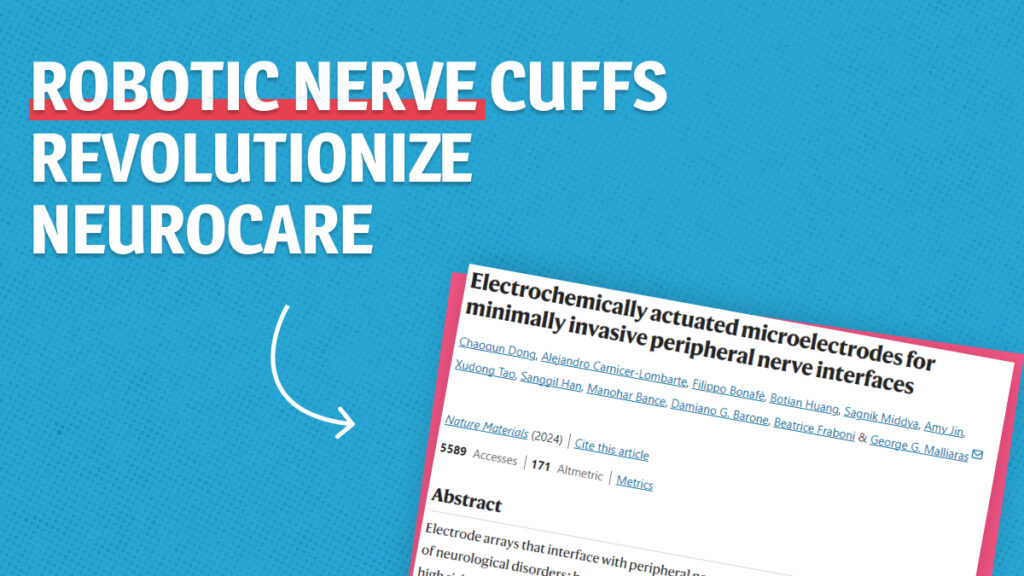Innovative Robotic Nerve Cuffs Revolutionize Neurocare

Researchers from the University of Cambridge have developed groundbreaking tiny, flexible devices capable of wrapping around individual nerve fibers without causing damage. These innovative nerve cuffs, employing a combination of flexible electronics and soft robotics techniques, offer promising applications in diagnosing and treating neurological disorders like epilepsy, chronic pain, and enhancing the control of prosthetic limbs.
Imagine tiny robots delicately wrapping around nerves to help treat conditions like chronic pain or even improve prosthetic limb control.
Conventional tools for interfacing with peripheral nerves have been bulky and risky, often leading to nerve injury. However, these new robotic nerve cuffs are designed to delicately grasp or wrap around nerve fibers without causing harm. Tested successfully in rats, the cuffs require only minimal voltages to adjust their shape, forming a self-closing loop around nerves without surgical sutures or glues.So, no more bulky and risky procedures when it comes to nerve treatments?
That sounds like a game-changer.
The integration of soft electrical actuators with neurotechnology presents an opportunity for minimally invasive monitoring and treatment of various neurological conditions. Electric nerve implants, capable of stimulating or blocking signals in target nerves, hold the potential for alleviating pain or restoring movement in paralyzed limbs. Nerve monitoring, a standard surgical procedure in nerve-rich areas like the spinal cord, can benefit from these advancements. It’s fascinating how technology can improve treatments without being invasive. Makes you wonder what else it could help with.
The nerve cuffs, made from conducting polymers typically used in soft robotics, consist of ultra-thin layers that respond to tiny amounts of electricity. This enables them to be rolled up into a needle and injected near the target nerve, where they then adapt their shape to wrap around the nerve, facilitating monitoring or alteration of nerve activity.
Injecting tiny cuffs near nerves?
That’s like something out of a sci-fi movie!
Notably, the cuffs can change shape in both directions and be reprogrammed, allowing surgeons to optimize their fit around nerves for optimal recording and stimulation. Tests in rats demonstrated successful placement without surgery, forming a secure interface with the target nerve.
So, these cuffs can be customized for each patient’s needs?
That’s impressive.
Looking ahead, researchers aim to conduct further testing in animal models and eventually progress to human trials. The ability to reach nerves non-invasively, such as those controlling pain, vision, or hearing, without implanting devices inside the brain, holds promise for safer procedures and improved patient outcomes.
Exciting times ahead for neurocare, with safer and more effective treatments on the horizon.
Supported by organizations like the Swiss National Science Foundation and the Engineering and Physical Sciences Research Council, this innovative technology paves the way for highly targeted neurological treatments, offering a glimpse into a future where technology enhances patient care.
It’s amazing to see how collaboration and innovation can transform healthcare for the better.
Until then,
Follow Neureads.

